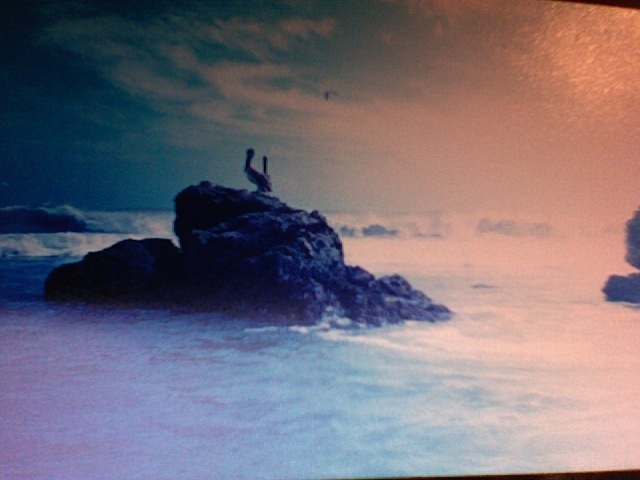
The martial art and ritual combat dance know as Capoeira is one of the primary expressions of an African, specifically Kongo-Angolan, continuum in Brazil. Its origins may go back as far as the 16th century, when slaves from western Central Africa arrived in Salvador and the surrounding Recôncavo region. They came in great numbers throughout the 17th centruy, when they formed the majority of slaves in Brazil. Parts of Angola were almost depopulated in the process. Since Angolans were the first of the large African groups in Brazil, they came into contact with the Amerindians and caboclos, people of Portuguese-Amerindian descent. To this day in Brazil, one often finds Angolan and Amerindian elements closely associated, as in the expression caboclos de Aruanda, literally Indians from Luanda, the capital of Angola. In Afro-Brazilian religious contexts, a caboclo is the spirit of a dead Indian, and Aruanda means something like "spiritland."
It is not surprising then that the word capoeira is believed by many to have a possibly Amerindian etymology, although the word may also be of Portuguese or Bantu origin. The slaves brought to Brazil were replacements for indigenous laborers from whom they learned agricultural techniques. A generally accepted theory of the origin of the word capoeira is that it comes from the Tupi Indian ka puêra, meaning "secondary growth, the grassy scrubland that sprang up after virgin forest had been cleared for planting." The implication is that such clearings were secluded spaces hidden from the plantation's overseer's eyes where African slaves might freely perform their dances. The word also carries the connotation of escaping to the "bush".
There are many claims regarding the origins of Capoeira. Everybody agrees that the prescence of capoeira in Brazil is directly connected to the importation of African slaves by the Portuguese. Exactly in what form it arrived and how it evolved is the subject of much speculation and debate. There are some historical documents that support one premise. In an old letter by Albano de Neves e Souza, it is stated that "N'golo is capoeira". Albano wrote that N'golo was an acrobatic zebra dance performed by young males of the Mucope people in Angola. N'golo also had a competitive aspect, in that the one chosen as the best dancer was able to chose a bride without having to pay the bride's family a marriage fee. The famous Capoeira Angola master Vincente Pastinha stated that his own teacher, a man from Angola named Benedito, told him that capoeira came from the N'golo dance. However, there are many other theories about capoeira's origins.
Capoeira Angola is a multiform phenomenon. It draws elements from dance, fight, ritual, and musical performance. It is a person's way of defense, and it is also a form of entertainment. This is shown by some of the words used in refering to it, such as "brincadeira", "vadiação", meaning merriment, entertainment; and by the fact that it was frequently played when individuals were resting from their work, particularly sailors and laborers on the docks.
Capoeira scholar Ken Dossar writes:
The object of the game is for the capoeiristas to use finesse, guile, and technique to maneuver one another into a defenseless position, rendering them open to a blow, kick or sweep. Only one's hands, head and feet are allowed to touch the floor. Generally there is no contact from strikes. An implied strike is more admired; particularly when the opponent has been clearly manipulated into an indefensible position. All strikes, evasions, and counterstrikes are woven together creatively during the course of a game. The freedom to improvise and create openings keeps capoeira's action fluid and fresh.
Mestre João Grande often describes Capoeira Angola metaphorically. He explains that Capoeira Angola is like a plant growing up from the ground; it starts small, but with time it can grow into a large tree. This refers not only to the fact that it takes time and patience to learn but also that the game itself should start on the ground.
Sometimes in class he'll ask people "What does the fish do"? Answer: Fish 'ginga' (the basic move of capoeira angola) as they move through the water! Or he'll ask "What do monkeys do"? Answer: Monkeys 'au!' (a capoeira style cartwheel). He also likes to say that Capoeira Angola is something good to eat. He deeply believes that Capoeira Angola gives many positive things in life. Mestre wants his students to understand the practice, philosophy and tradition of Capoeira Angola, as he was taught by Mestre Pastinha.
Mestre Pastinha explained:
I practice the true capoeira angola and in my school they learn to be sincere and just. That is the Angola law. I inherited it from my grandfather. It is the law of loyalty. The Capoeira Angola I learned, I did not change it here in my school....When my students move on, they move on to know about everything.
These are some examples of what Mestre has to teach about Capoeira Angola. If you wish to learn more, come by the academy and speak with the Mestre himself, he's very patient and loves to share his knowledge.
Portions excerpted from "Capoeira Angola and Mestre João Grande" by C. Daniel Dawson, the liner notes by Morton Marks, Phd from "Capoeira Angola 2" Smithsonian Folkways Recordings and "Capoeira Angola: More Than a Martial Art" Karate/Kung Fu Illustrated August 1988 by Alejandro Frijerio, Phd.
CAPOEIRA ANGOLA CENTER OF MESTRE JOÃO GRANDE
in the photo: João Pequeno and João Grande by the docks.
source: http://www.joaogrande.org
Monday, 28 September 2009
The Tradition of Capoeira Angola
Subscribe to:
Post Comments (Atom)











No comments:
Post a Comment